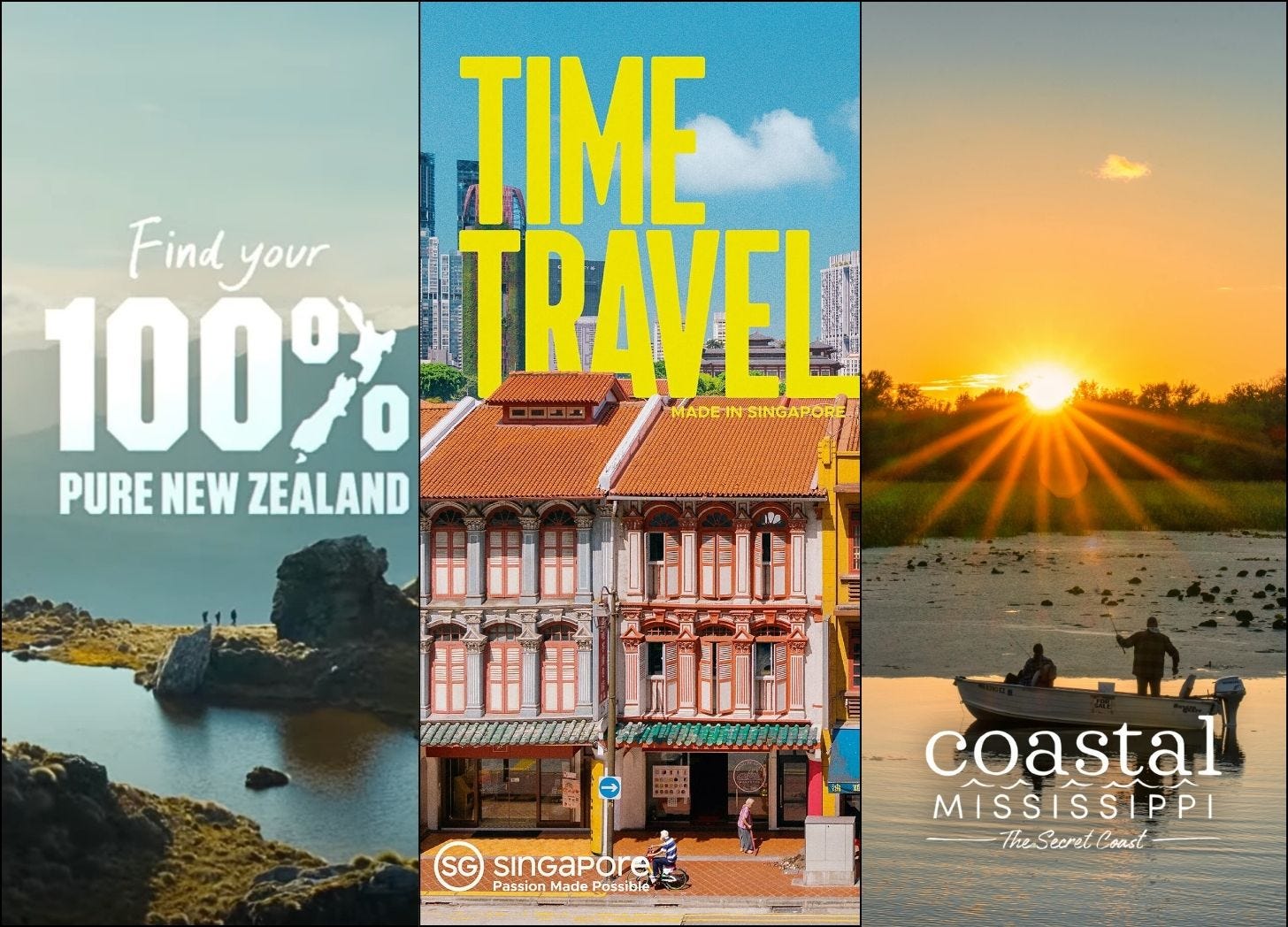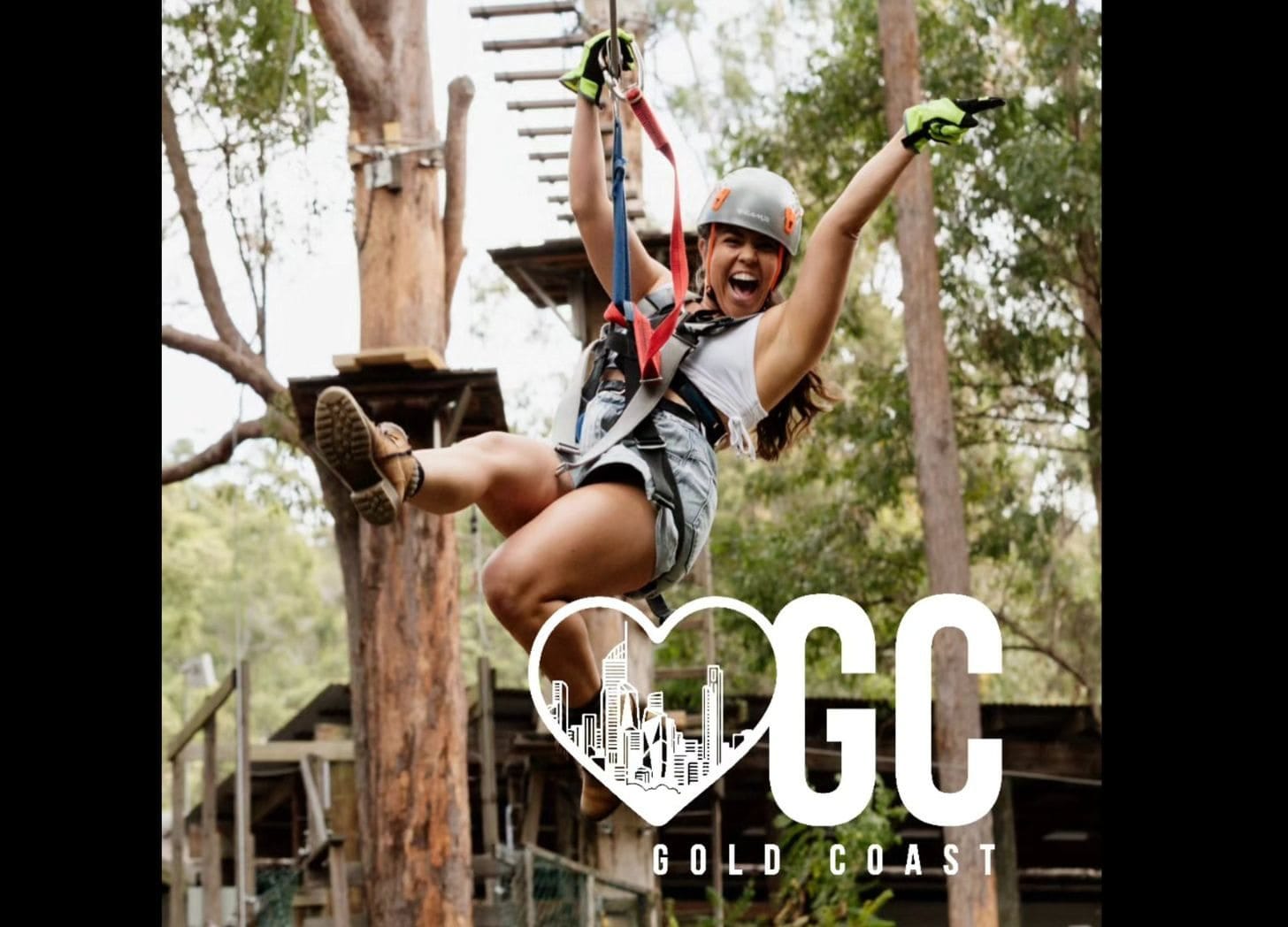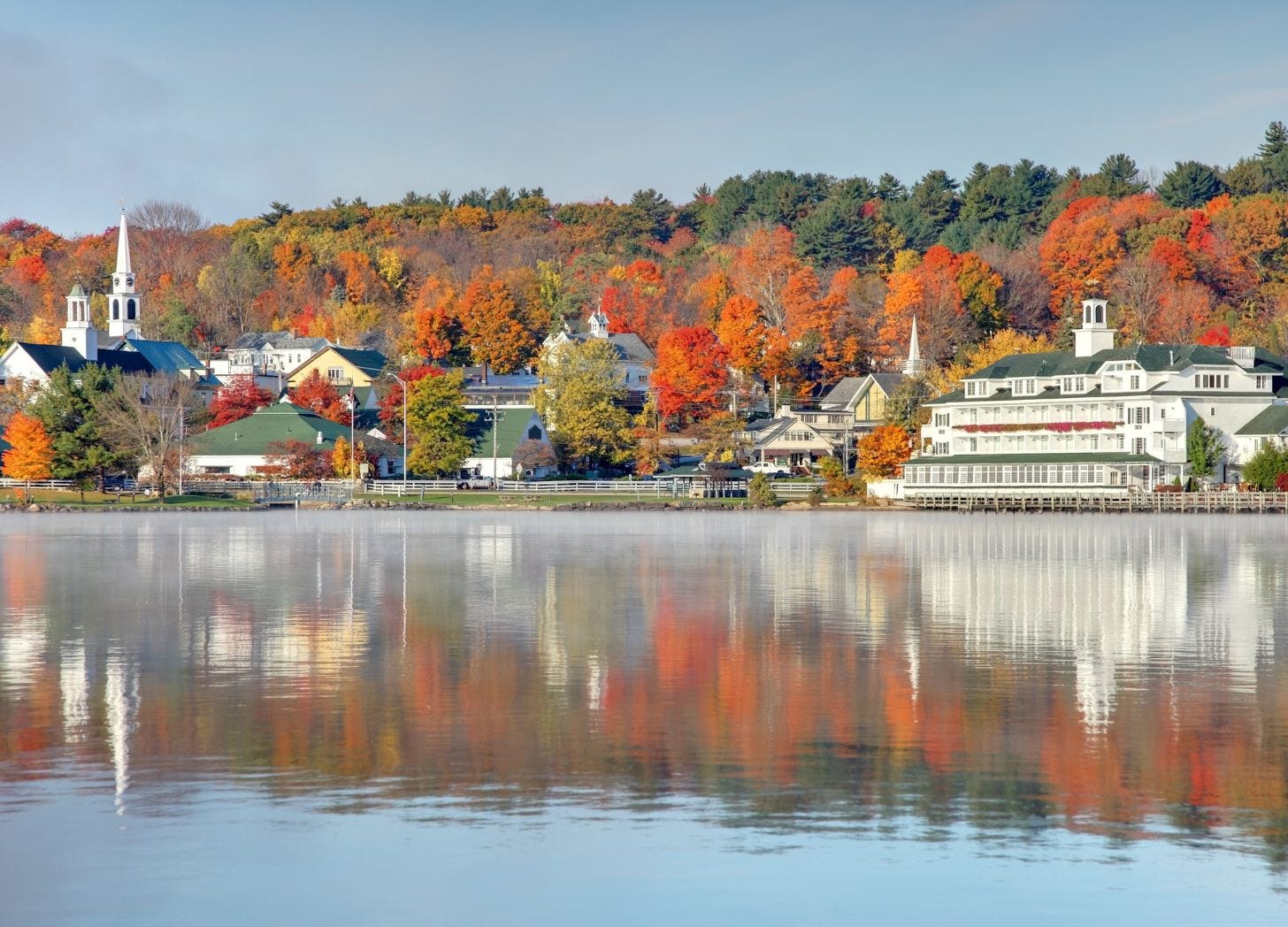A landmark without a story is just a photo op.
A landmark is seen. An experience is felt.
Here’s the quiet truth:
“Must-see” lists are written to make everyone happy, except the traveler.
They’re designed for clicks, not connections.
Destinations keep chasing the same formula because it’s safe. Predictable. Quantifiable.
But travelers aren’t looking for proof they showed up; they’re looking for proof they belong.
A beach becomes unforgettable only when someone tells you who fished there, who sang there, who still does.
A mural becomes meaningful only when you know why it exists.
That’s the real story hiding beneath the postcard.
Storytelling Makes Places Stick
Storytelling turns coordinates into connection.
It’s how guests go from we went there to you have to go there.
The best destinations already know this:
New Zealand’s “100% Pure” didn’t sell scenery. It sold guardianship.
Singapore’s “Passion Made Possible” tied ambition to identity.
Coastal Mississippi’s “The Secret Coast” promised discovery and belonging, driving a 22 percent lift in repeat visitation and doubling web traffic within six months (Digital Agency Network, 2025).
Each one replaced the attraction with emotion and won.
According to Expedia’s Traveler Value Index (2024, via Sojern, State of Destination Marketing 2025), 70 percent of travelers say emotional connection and local authenticity influence their trip decisions more than iconic landmarks.
More recent campaigns echo this shift. Gold Coast’s #LOVEGC turned residents into on-the-ground ambassadors, fueling a 27 percent rise in overnight stays (Digital Defynd, 2025). In Sweden, Visit Sweden’s Audio Stories invited locals to narrate immersive sound journeys for listeners worldwide (KeyGroup, 2025). Both proved that co-creating stories with communities builds belonging and bookings.
When Visit Scotland invited local guides to narrate hikes in first-person videos, engagement rose 40 percent (Skift, 2024).
When the Faroe Islands let visitors “control” locals’ cameras remotely, the campaign went viral worldwide.
Both worked because they stopped selling scenery and started sharing belonging.
From Photos to Feelings: Real Things You Can Do
Start with Locals
Ask five locals what they’d tell someone who’s never been here. Write it down, record it, or film it. Real voices beat polished slogans every time.Put People Before Pixels
The person greeting guests, crafting meals, or guiding hikes is more memorable than any drone shot.Keep a Rhythm
Tell the same story in different ways—a reel, a blog, a quote. Repetition builds recognition, not boredom.Measure Emotion, Not Impressions
Watch for signals of connection: repeat stays, direct bookings, reviews that echo your story. Likes don’t equal loyalty.Evolve the Story
Use feedback and community input to refresh your message. Destinations grow. Their stories should too.
An AI Prompt That Turns Must-Sees Into Stories
Try this AI prompt to uncover the stories that make your destination unforgettable:
You are a local historian and storyteller for [destination].
Identify five little-known stories, traditions, or figures that reveal why this place matters to locals and visitors today.
For each:
Provide a short, descriptive title (like a headline).
Write a 2–3 sentence story summary with sensory or emotional detail.
Explain why it resonates emotionally with travelers.
Suggest how a hospitality or destination brand could feature it in content, experiences, or marketing.
Use an authentic, respectful, and emotionally engaging tone that highlights the human connection behind the place. Avoid clichés or travel-brochure language.
Use this with ChatGPT or your preferred AI writing tool. It’s a quick way to surface authentic stories that move people, not just fill space.
Storytelling Gone Wrong
Not every story lands. Generic copy, stock visuals, or campaigns chasing virality over value fall flat.
Authenticity can’t be manufactured. It has to come from lived experience.
The best destinations pair storytelling with measurement to ensure every message serves both the traveler and the community (Evok Advertising, Destination Marketing Guide 2025).
As one local guide told Simpleview (2025), “Visitors don’t come here to see the reef. They come to meet the people who depend on it.”
The Real Value Equation
Great destinations make saying yes easy.
They do three things well:
Make the promise clear: “Escape ordinary. Experience stories that last.”
Show proof: Share guest photos, local collaborations, media features.
Stack the value: Package moments, not discounts—behind-the-scenes tastings, meet-the-maker days, sunrise tours.
Every touchpoint should make travelers feel they’re joining a story, not buying a stay.
The Takeaway
The next era of destination success will not belong to whoever builds the biggest landmark.
It will belong to those who tell the most human story.
Because travelers may forget what they saw,
but they will never forget how your place made them feel.
Your Turn
Every destination has a “must-see” that could become something more.
Tell me: what’s one story hiding behind a landmark near you?
I read every response, and a few of my favorites might appear in next week’s issue.
If You Missed Last Week’s Post
Catch Storytelling vs. Infrastructure: The Real Driver of Destination Growth where we proved that building better stories beats building more stuff.
Behind This Issue
I was in Meredith, New Hampshire, this week for a conference with the Northeast Chapter of the Travel and Tourism Research Association. During a walking tour of the town, we didn’t focus on must-sees like the dam or the monuments. Instead, we heard the stories behind them, why they mattered, and who they represented.
Once again, it wasn’t the landmarks that stuck with me. It was the stories that made an impact.






